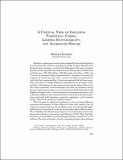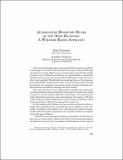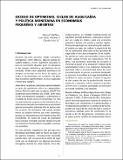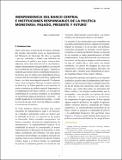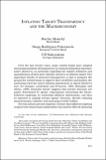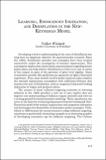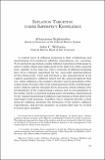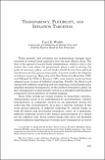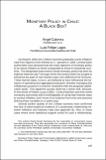Search
Now showing items 21-30 of 36
A critical view of inflation targeting: crises, limited sustainability and aggregate shocks
Inflation targeting has recently been adopted by the central banks of several advanced economies, including Australia, Canada, Finland, New Zealand, Spain, Sweden, and the United Kingdom. The policy is widely perceived as having been successful (see the discussions in Leiderman and Svensson, 1995, ...
Alternative monetary rules in the open-economy: a welfare-based approach
How do central banks choose among alternative monetary polocies? In this paper we analyze that question for an open economy following an interest rate rule. Many issues remain controversial in the design of such a rule. If inflation is targeted, as it presumably is, should the domestic interest rate ...
Exceso de optimismo, ciclos de auge y caída y política económica en economías pequeñas y abiertas
El artículo analiza los ciclos económicos en las economías emergentes generados por errores de percepción respecto de la productividad futura. Utilizando un modelo DSGE para economía pequeña y abierta, se demuestra que las noticias que no se materializan respecto de mejoras de productividad futuras ...
La política monetaria en Chile
Este trabajo presenta una revisión de los principales aspectos de la política monetaria implementada por el Banco Central de Chile a partir de 1990. poniendo especial énfasis en su rol en la reducción de la inflación durante ese período. La política monetaria en Chile se implementa a través de un ...
Independencia del banco central e instituciones responsables de la política monetaria: pasado, presente y futuro
En el pasado, se esperaba que los bancos centrales —por ley, costumbre, o ambas— usaran sus instrumentos de política para lograr múltiples objetivos, como alto crecimiento y empleo, financiamiento para el Fisco y solución de problemas de balanza de pagos. Hoy gozan de sustancialmente más independencia, ...
Inflation target transparency and the macroeconomy
Over the last twenty years, many central banks have adopted increasing standards of transparency in communicating their monetary policy objectives, in particular regarding the explicit definition and quantification of their price stability objective or inflation target. One important benefit of increased ...
Learning, endogenous indexation, and disinflation in the new-keynesian model
Developing a better understanding of the costs of disinflation has long been an important objective for macroeconomic research. Since the 1980s, disinflation episodes and strategies have been studied extensively under the assumption of rational expectations. This assumption implies that central bank ...
Inflation targeting under imperfect knowledge
A central tenet of inflation targeting is that establishing and maintaining well-anchored inflation expectations are essential. Well-anchored expectations enable inflation-targeting central banks to achieve stable output and employment in the short run, while ensuring price stability in the long run. ...
Transparency, flexibility, and inflation targeting
Three parallel and certainly not independent changes have occurred in central bank practices over the past fifteen years. The first is the spread of central bank independence, which is tied to the notion that even when the government plays a role in setting the goals of monetary policy, central banks ...
Monetary policy in Chile: a black box?
During the 1990s the Chilean economy gradually cut its inflation rate from figures in the thirties to 4.7 percent in 1998. Central bank authorities have declared that the main objective of monetary policy is to reduce inflation to levels comparableto those in industrial countries. The desgnated ...

